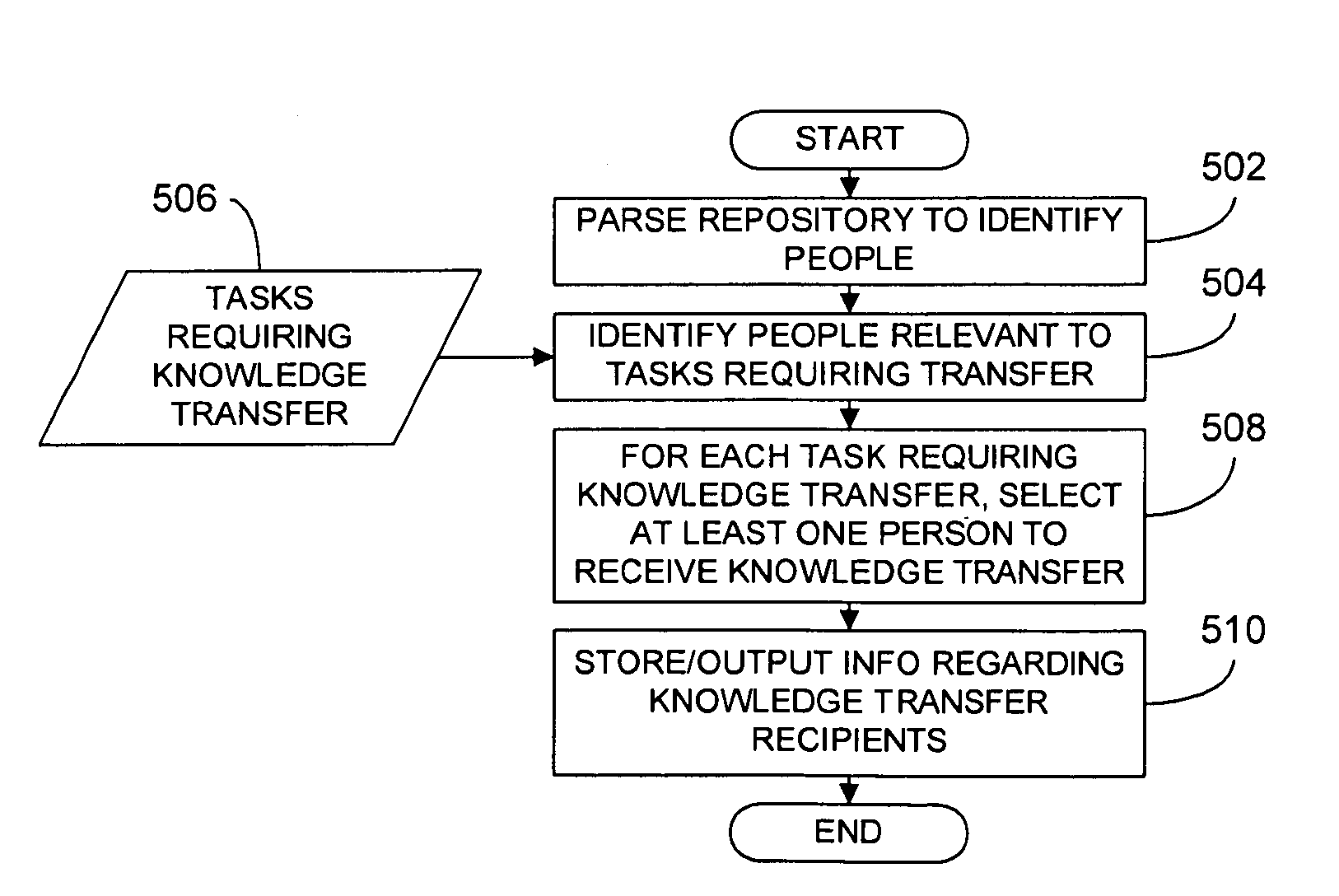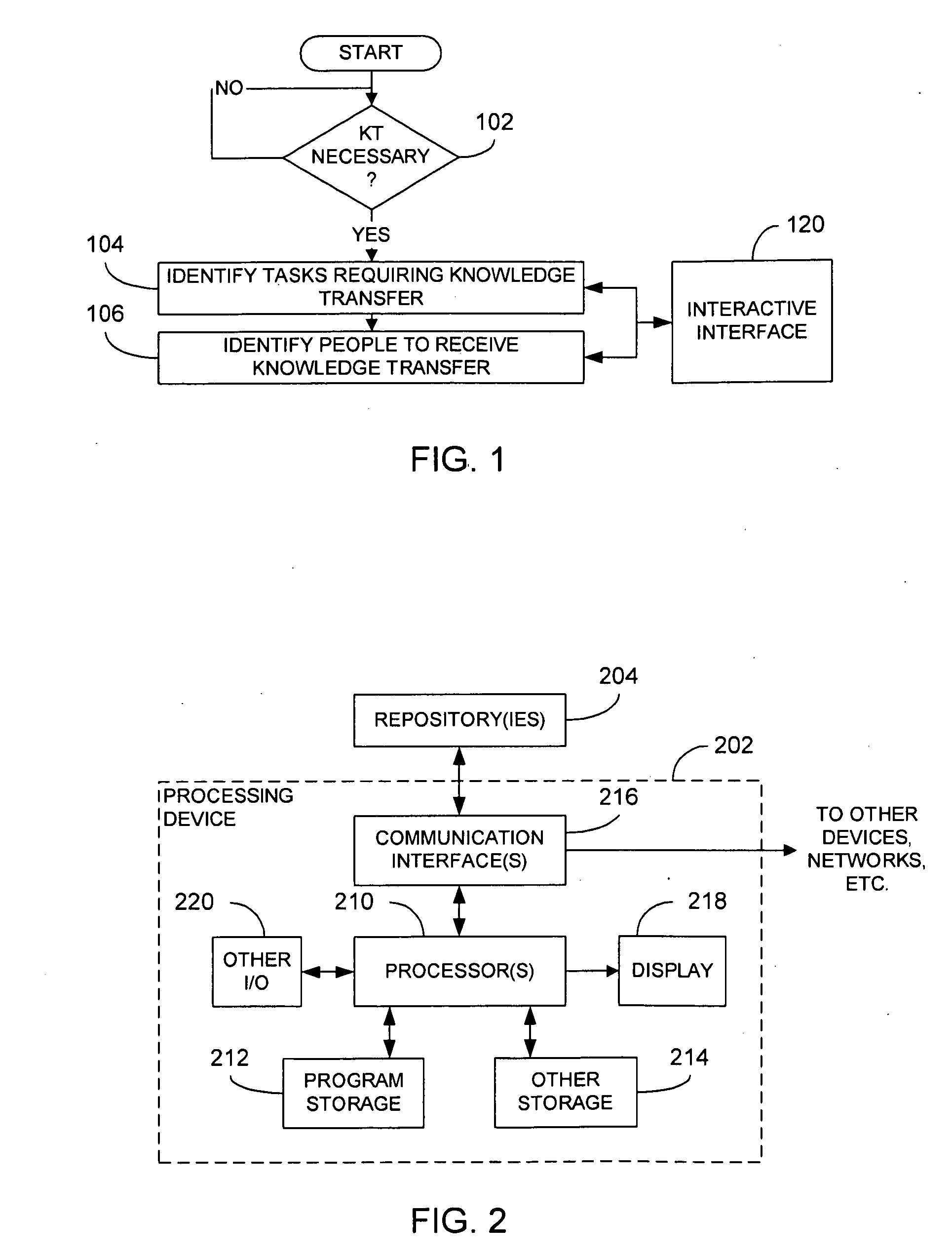Knowledge transfer in a project environment
a project environment and knowledge technology, applied in the field of project management systems, can solve the problems of large amount of knowledge about the project that cannot be replicated, failure to transfer knowledge from one or more transitioning project participants to other remaining project participants, and can have a significant negative impact on project quality, delivery time and cost, and project parameters. achieve the effect of effective, complete and efficient knowledge transfer
- Summary
- Abstract
- Description
- Claims
- Application Information
AI Technical Summary
Benefits of technology
Problems solved by technology
Method used
Image
Examples
Embodiment Construction
[0015]Referring now to FIG. 1, a technique for effecting knowledge transfer in accordance with the instant disclosure is illustrated. In particular, it is determined at block 102 whether knowledge transfer is even necessary. The need for knowledge transfers generally arise as a result of one or more project participants transitioning away from a given project. For example, such transitions may include a given project participant terminating his / her employment, or a project participant being assigned to work on another project that will substantially diminish (if not entirely eliminate) the participant's ability to continue working on the project. As a practical matter, the reasons for such transitions do not limit the generality of the instant disclosure.
[0016]Regardless of the reason for the transition, once it is determined that one or more participant transitions are occurring, identification of tasks requiring knowledge transfer and of knowledge transfer recipients is undertaken...
PUM
 Login to View More
Login to View More Abstract
Description
Claims
Application Information
 Login to View More
Login to View More - R&D
- Intellectual Property
- Life Sciences
- Materials
- Tech Scout
- Unparalleled Data Quality
- Higher Quality Content
- 60% Fewer Hallucinations
Browse by: Latest US Patents, China's latest patents, Technical Efficacy Thesaurus, Application Domain, Technology Topic, Popular Technical Reports.
© 2025 PatSnap. All rights reserved.Legal|Privacy policy|Modern Slavery Act Transparency Statement|Sitemap|About US| Contact US: help@patsnap.com



